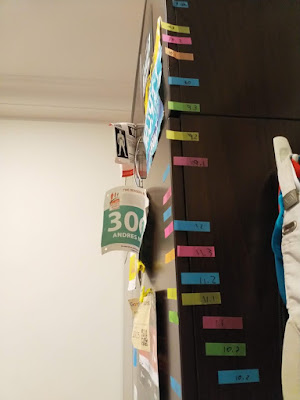Timeline of changes in your body - 18 months after surgery
Has been one year and a half since the surgery, and things continue to slowly improve. As usual, visual changes compared to 3 months ago are low profile. However, it doesn't feel that way at all. There's a very significant improvement of strength and usage of the affected arm, slowly making my right arm the dominant arm once again - at least for anything that doesn't require more than 90 degree elevation angle, then it needs some help. I barely keep track of new movements and "milestones" achieved nowadays, not as much because of wearing off from time consuming toil, but mostly because life as normal is mostly achieved at this point. Nevertheless, I still do keep my routine of recovery exercises. With the increased muscle mass in the deltoid, it's visual atrophy is less prominent and cracking noises are less frequent. Hypersensitivity of certain areas of the hand is improving. Mostly remaining in the thumb and lower part of the palm.
